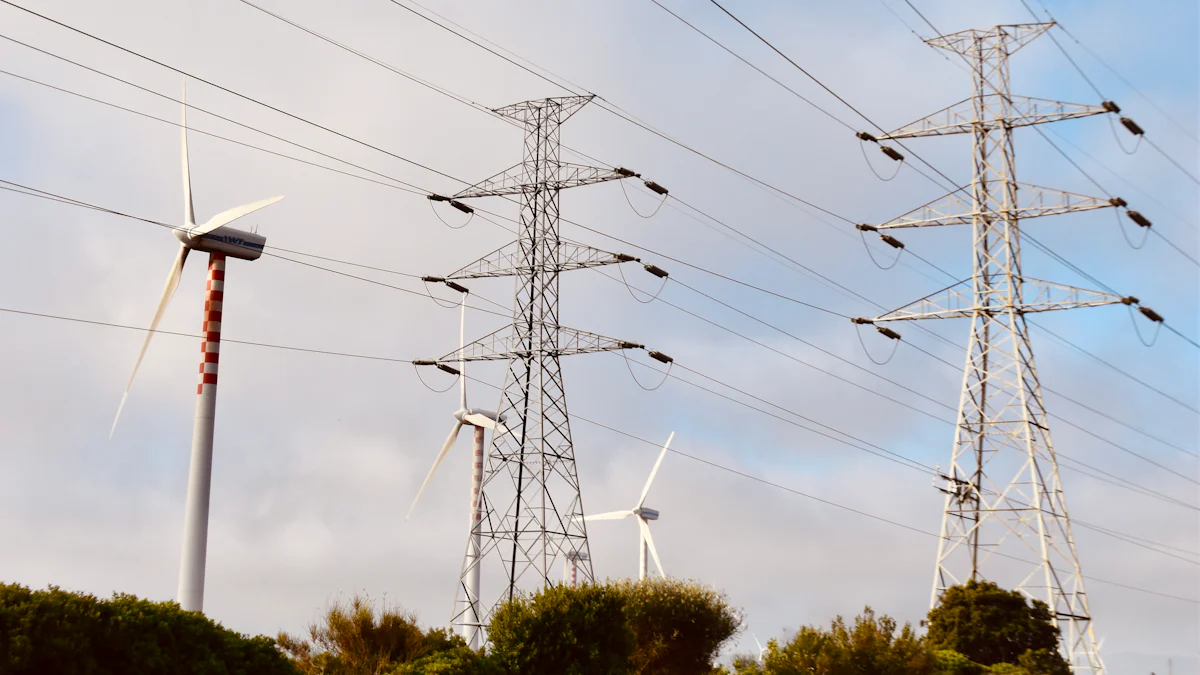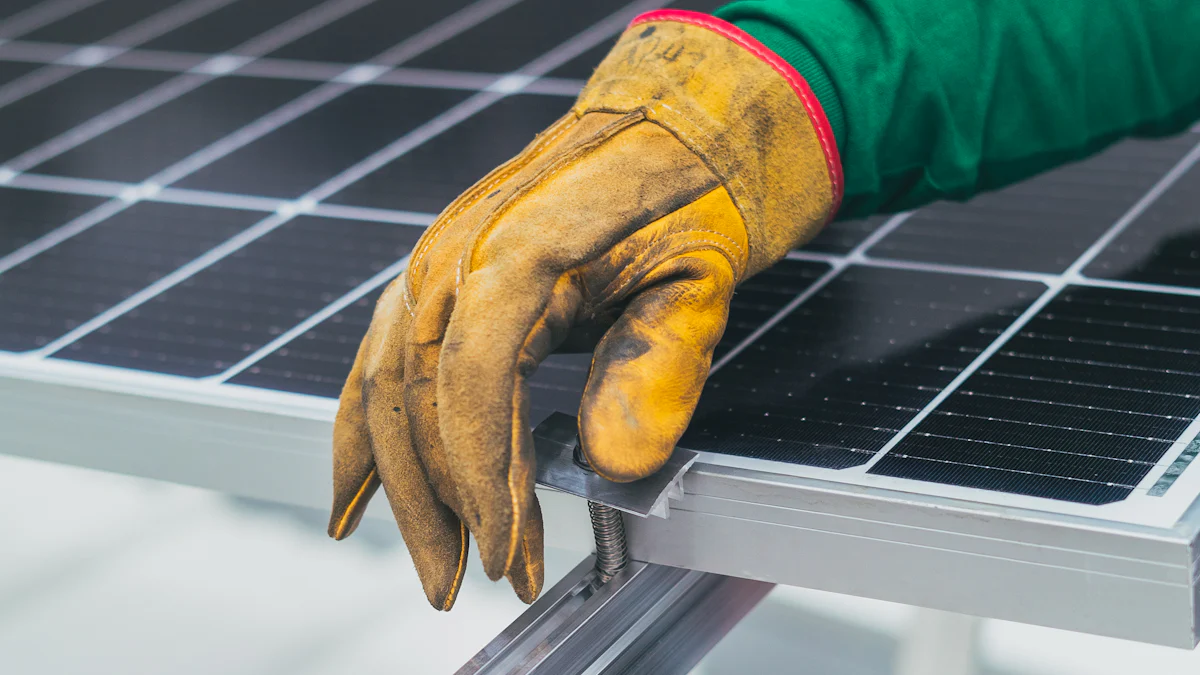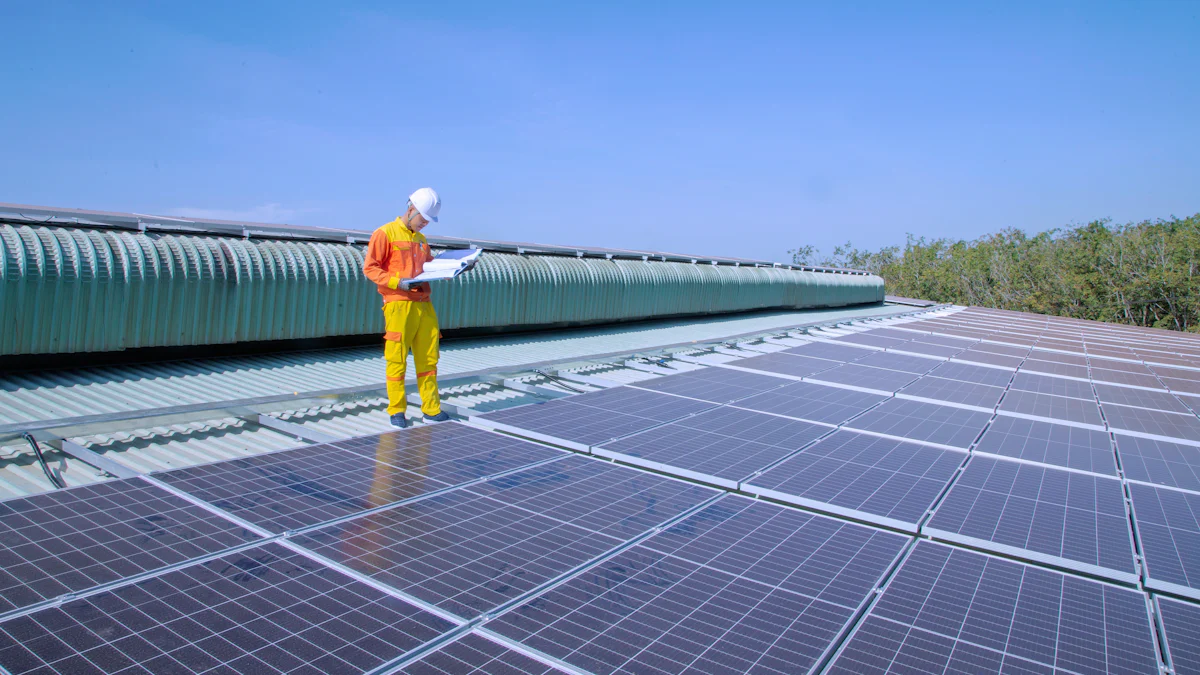How long can a solar panel extension cable be

When you’re setting up a solar panel system, the length of the extension cable for solar panel connections plays a big role in how well your system works. Longer cables can cause energy loss due to voltage drop. Choosing the right cable and planning carefully ensures your panels deliver the power you need efficiently.
Voltage Drop and Its Impact on Cable Length

Understanding voltage drop
Voltage drop happens when electricity travels through a cable and loses some of its power along the way. It’s like water flowing through a long hose—some pressure gets lost before it reaches the end. The longer the cable, the more energy gets lost. This is why the length of your extension cable for solar panel connections matters so much.
When voltage drops too much, your solar panels won’t deliver the energy you expect. This can lead to inefficiencies and even affect the lifespan of your system.
Effects of voltage drop on solar panel efficiency
Voltage drop directly impacts how well your solar panels perform. If the energy loss is too high, your system won’t generate enough power to meet your needs. For example, if you’re using a long extension cable for solar panel connections without considering voltage drop, you might notice your appliances running less efficiently.
In extreme cases, the energy loss could make your solar setup unreliable. That’s why understanding and managing voltage drop is crucial for keeping your system running smoothly.
Factors influencing voltage drop (distance, current, and cable gauge)
Three main factors determine how much voltage drop you’ll experience:
- Distance: The farther electricity has to travel, the more energy it loses.
- Current: Higher current levels increase voltage drop. Systems with larger energy demands are more affected.
- Cable gauge: Thicker cables (lower gauge numbers) reduce voltage drop. Choosing the right gauge for your extension cable for solar panel connections can make a big difference.
By balancing these factors, you can minimize voltage drop and ensure your solar panels work efficiently.
Recommended Lengths for an Extension Cable for Solar PanelResidential solar systems
For most homes, you’ll find that keeping the extension cable for solar panel connections under 50-100 feet works best. This range minimizes voltage drop and ensures your panels deliver enough power to run your appliances efficiently. If your panels are installed farther from your home, you might need thicker cables to handle the extra distance.
Planning is key here. Measure the distance between your panels and the inverter or battery system. Then, choose a cable gauge that matches the length. A little extra effort upfront can save you from energy loss and performance issues later.
Off-grid and portable setups
When you’re working with off-grid or portable solar setups, shorter cables are usually better. These systems often power smaller devices like camping gear or RV appliances, so you don’t need long cables. A 10-30 foot extension cable for solar panel connections is typically enough.
If you’re setting up in a remote area, consider the terrain. Rough or uneven ground can make cable management tricky. Use durable cables and secure them properly to avoid damage.
Commercial and large-scale installations
For commercial or large-scale solar installations, cable lengths can vary widely. These setups often require cables that stretch hundreds of feet. To handle the longer distances, you’ll need thicker cables with lower gauge numbers.
In these cases, consulting a professional is a smart move. They can help you calculate voltage drop and recommend the right cable gauge for your system. Proper planning ensures your investment in solar energy pays off with maximum efficiency.
Choosing the Right Cable Gauge

Why cable gauge matters
The cable gauge determines how much electricity can flow through the wire without losing power. A thicker cable (with a lower gauge number) can handle more current and reduce voltage drop. If you choose the wrong gauge, your system might not perform as expected. You could lose energy or even damage your equipment.
Think of it like a highway. A wider road allows more cars to pass through without traffic jams. Similarly, a thicker cable ensures electricity flows smoothly, even over longer distances. Picking the right gauge is essential for keeping your solar setup efficient and reliable.
Common gauges and their suitability for different lengths
Cables come in various gauges, and each works best for specific lengths and power needs. Here’s a quick guide:
| Cable Gauge | Recommended Length | Best Use |
|---|---|---|
| 10 AWG | Up to 30 feet | Portable or small off-grid setups |
| 8 AWG | 30-50 feet | Residential systems |
| 6 AWG | 50-100 feet | Larger residential setups |
| 4 AWG or lower | Over 100 feet | Commercial installations |
For longer distances, always go with a thicker cable to minimize energy loss.
Tips for selecting the correct gauge for your system
Choosing the right gauge doesn’t have to be complicated. Start by measuring the distance between your solar panels and the inverter or battery. Then, consider the current your system will carry. Use a voltage drop calculator to double-check your choice.
If you’re unsure, go for a thicker cable. It’s better to overestimate than risk energy loss. Also, look for high-quality materials like copper, which conducts electricity better than aluminum. A little extra investment in the right cable can save you from headaches later.
Pro Tip: Always consult your solar panel manufacturer’s recommendations for the best results.
Practical Installation TipsProtecting cables from environmental damage
Your solar panel cables face a lot of challenges outdoors. Sunlight, rain, snow, and even pests can damage them over time. To keep your cables safe, you should use protective coverings or conduits. These coverings shield the cables from harsh weather and prevent wear and tear.
If your cables are buried underground, make sure they’re inside a waterproof conduit. This keeps moisture and pests from causing problems. For above-ground installations, secure the cables to prevent them from moving in the wind. Movement can lead to fraying or breakage.
Tip: Check your cables regularly for signs of damage. Early detection can save you from costly repairs later.
Ensuring secure connections
Loose connections can cause energy loss and even safety hazards. When setting up your system, double-check that all connections are tight and secure. Use connectors designed specifically for solar systems. These connectors ensure a stable and reliable connection.
You should also avoid over-tightening. Too much pressure can damage the connectors or cables. A snug fit is all you need. If you’re unsure, follow the manufacturer’s guidelines for your specific system.
Using tools like voltage drop calculators
Voltage drop calculators are your best friend when planning cable lengths. These tools help you figure out how much energy loss you’ll face based on the cable length, gauge, and current. You can find many free calculators online.
To use one, simply input your system details. The calculator will tell you if your chosen extension cable for solar panel connections is suitable. This saves you from trial and error and ensures your system runs efficiently.
Pro Tip: Always round up when choosing cable gauge. A slightly thicker cable is better than one that’s too thin.
The length of your solar panel extension cable depends on voltage drop and cable gauge. For most homes, keeping it under 100 feet works best. Longer runs? Use thicker cables. Plan carefully, protect your cables, and choose the right gauge. Need help? Use a voltage drop calculator or consult a pro for accurate results.
Tip: A little planning now saves you from energy loss later!
Media Contact
Company Name: Zhejiang Pntech Technology Co., Ltd.
Email: Send Email
Phone: +86 574 27975188
Country: China
Website: https://www.pncables.com/






